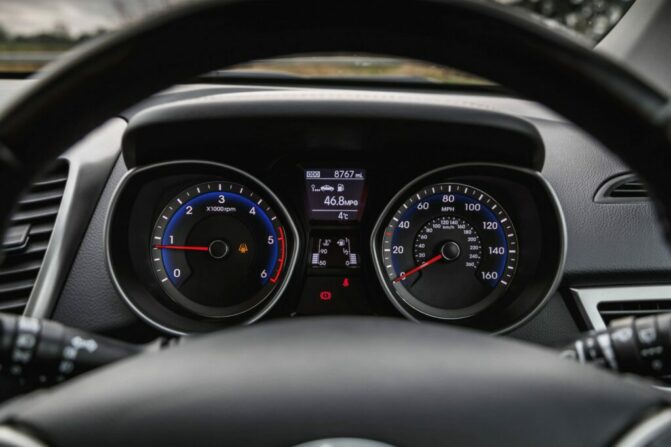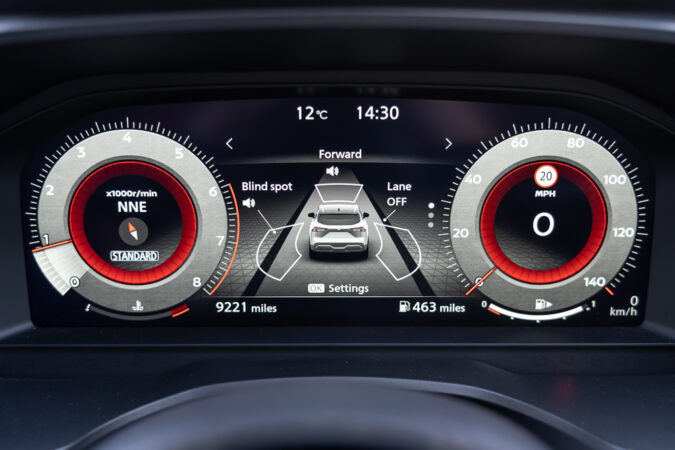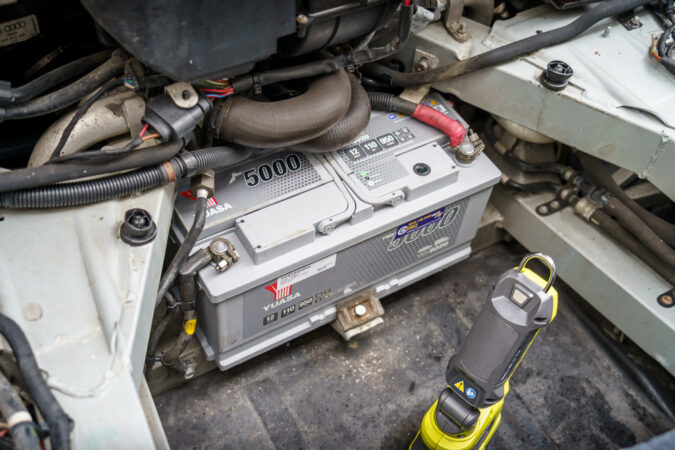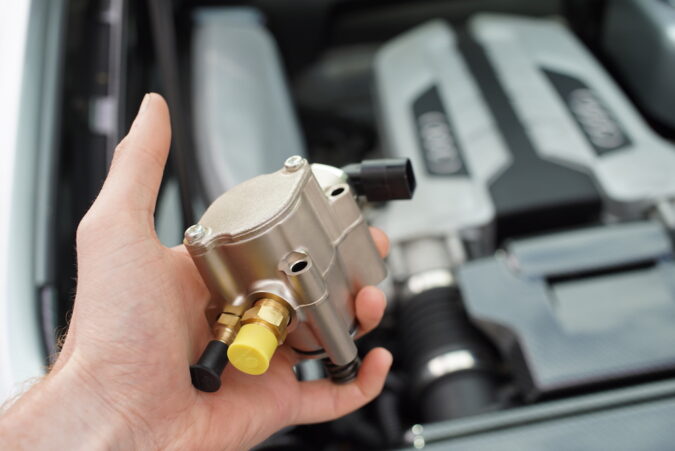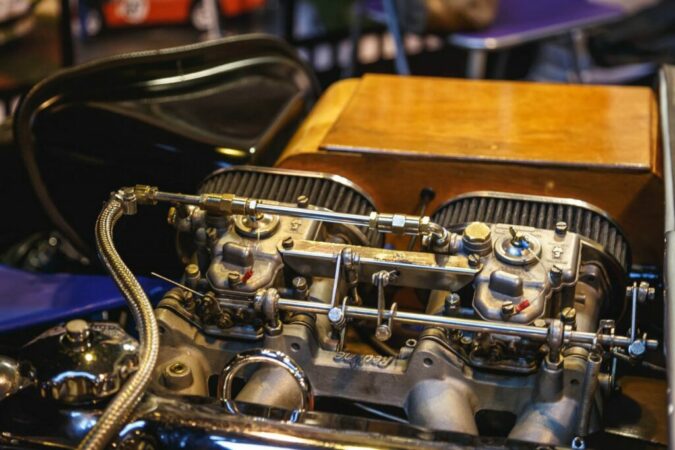We’ve all heard suggestions that you shouldn’t leave your car idle for more than 10 or 30 minutes. But these claims have never been supported by scientific evidence. Some claim it will deplete the battery. Other issues that are warned about include insufficient engine lubrication and component deterioration. So is idling bad for your car? Let’s look into the issue in detail.
The truth is that a healthy engine may idle for an unlimited period of time without causing damage. The only potential issue is overheating. But this can only occur in very old cars or vehicles with a malfunctioning coolant system.
Now we know how long a car can operate at idle. So, we’ll look more closely at what happens to your automobile while it’s in park. We’ll also discuss about leaving the car running overnight or idling it while the A/C is on.
- Effects Of Idling
- Idling And Battery
- Idling With A/C On
- Idling Low And Cutting Off
- Car Dies While Idling And Restarts
- Idling Rough
- Conclusion
- FAQ
Idling Car
“Idling” refers to continuing to run your car after it has been started. It basically refers to leaving your car’s engine running while it is stationary. Your car is still switched on and has the potential to start moving at any time even though it is in an “idle” condition. In reality, if it weren’t for other mechanisms and parts like the transmission and brakes, it would start moving right away.
Is Idling Your Car Bad
It’s comforting to know that idling your automobile won’t harm it. However, is not a wise choice. Carbon monoxide poisoning is a major concern for human safety. It could be dangerous or even fatal to leave the car running in a small area like a garage. Only leave a car running in a place that is well ventilated, preferably outdoor.
After idling for a while, your automobile will eventually run out of gas. But you also face the risk of exhausting the battery because the slow-running engine also consumes battery power. While the automobile is idle, the alternator maintains the battery charged. However, other electrical components, such as the radio and lamps, can be pulling power from the battery.
Additionally, your engine may overheat when idling. This is more likely to occur in the case of a mechanical issue. The head gasket, spark plugs, and piston rings, however, deteriorate with time as a result of the car kept running.
Even while idling isn’t technically a grave issue, there are some problems caused by it. Engine idling can have a detrimental influence on your car. This includes your maintenance schedule and fuel usage. This could result in an immediate financial and environmental impact. Let’s look into the various problems caused by extensive idling-
Is Idling Bad For Your Car #1: “Ghost Miles”
Your car might have traveled a mile every two minutes if it weren’t for idling, and these “ghost miles” keep adding up. Excessive idling can lead to engine wear and carbon soot buildup in the engine and components. This could result in decreased lifespans of engine oil, spark plugs, and exhaust systems. You might end up needing to replace them earlier than you had originally planned.
Is Idling Bad For Your Car #2: Wastage Of Fuel And Money
Eliminating engine idling can reduce the amount of gasoline wasted by your car and, consequently, the amount of gas you pay for. Between 1/5 and 7/10 of a gallon of fuel is consumed every hour by an idle car. One gallon of fuel is burned every hour by an idle diesel truck.
Diesel fuel costs on average in the United States are currently close to $3 a gallon, which equates to an hourly fuel waste costing as much as $3. However, depending on the size of the engine, idling fuel consumption per hour might vary significantly.
Is Idling Bad For Your Car #3: High Chances For Theft
It is a given that some drivers will leave their car running when they enter a convenience store, fast food restaurant, etc. The vehicle may be at risk of theft because this is a clear invitation to criminals.
In actuality, 81,911 vehicles (or 11% of all stolen cars in the United States in 2018) had the keys or fobs inside. This was accurately reported by the National Insurance Crime Bureau (NICB). According to the bureau, the number could potentially be higher.
Is Idling Bad For Your Car #4: Environmental Damage
Not only are you wasting money when you let your engine idle. You are also increasing your carbon impact. In fact, you’ll stop one pound of carbon dioxide from being emitted into the air for every 10 minutes your engine is off and not idling.
Carbon dioxide is a major cause of global warming. You should reduce engine idle and the quantity of carbon dioxide your car releases into the environment. This promotes more environmentally friendly and sustainable car ownership.
Not only that but idling fumes have also been connected to serious health issues. These include cancer, lung, and heart disease, as well as asthma. The less carbon dioxide your car emits, the fewer people breathe in.
Does Idling A Car Charge The Battery
Yes, your car’s battery will begin to charge as long as the engine is running. It is potentially possible to fully charge your battery using this method. This is only if the electrical systems aren’t removing more energy from the battery than the alternator is providing.
Alternator
We’ll now discuss one of the vital parts of your car, the alternator. The alternator functions essentially as a generator or dynamo that is powered by the engine’s drive belt. It utilizes this spin to produce energy inside its coils while the engine is operating.
The battery is subsequently recharged by converting this alternating power to direct current. This process will continue as long as the engine is operating. If, however, you notice that your battery is starting to lose charge you might wonder why. Here the issue could be with your alternator.
How Long Would The Alternator Take To Charge The Battery?
It is technically feasible to charge your automobile battery by simply idling the engine. But this method is not particularly effective. To even get close to a full charge, you’d probably need to leave your car running for hours.
This is brought on by the initial charge loss experienced while starting the engine. According to research, it can take anywhere from 15 to 30 minutes to recover this initial charge.
Taking your car on regular trips would be a lot more effective approach to charging your battery. Depending on the car and the sort of battery it uses, the time it takes to charge the battery can vary. But you’ll typically find that it does so more quickly while being driven.
If you are unable to do this, don’t worry. Buying a trickle charger is an excellent way to maintain the health and charge of your battery.
Idling With A/C On
Your car can idle for an extended period of time with the air conditioner on in typical conditions. Newer technology helps keep the car cool while you wait to get inside and prevents harm from happening.
However, there are several things you need to be aware of. It is important to have adequate fuel in your car while idling. More fuel will be consumed by air conditioners. This causes your tank to empty more quickly. Keep that in mind if you intend to idle your car for an extended period of time with the air conditioner running.
What Causes A Car To Idle Up And Down
Numerous events are responsible for causing an idle surge. The engine not getting enough fuel (this is known as “running lean“) could be a major reason. This surge can be brought on for a number of reasons. Restricted fuel injectors, a vacuum leak, or practically anything that alters the fuel mixture entering the engine could result in causing a surge.
Your idle air control motor could possibly be failing. A computer-controlled motor that controls idle is all that the idle air control motor is. The reason for this could be because another sensor might be telling the computer to make a correction. This would force it to search for the proper RPM level and cause the idle to surge.
There is essentially only one technique to diagnose computer-controlled engines. That is to connect a diagnostic scanner to the car’s computer. That’s because, in order to pinpoint the problem, you need to see what all of the sensors are doing.
It’s never a good idea to replace a part based on an educated guess. It’s usually always more economical to pay a repair shop for the time needed to perform a diagnostic. This is much more sensible than to begin replacing parts right away.
Car Idling Low And Cutting Off
When the light at the intersection turns green, you pull up, but your car stalls out. More than just an inconvenience, having your engine stall might leave you trapped in a risky, busy area. You might have no way to drive your car to safety. It is especially hazardous because when your engine stalls, you can lose power assistance for your brakes and steering, drastically restricting your ability to control your car.
Water Coming Out Of Exhaust While Idling
Water coming from your car’s exhaust system is almost always completely natural and causes no concern. While the engine is operating, condensation is just being vented. When it’s chilly outside and the engine hasn’t been running for too long, you’re most likely to notice this.
As soon as you turn on your car, heated gases start to exit the exhaust system. The contrast between heat and cold causes condensation to accumulate inside the exhaust pipe. That moisture is eventually forced out of the system by the power of the engine’s exhaust. This results in water dripping from your muffler.
The water will stop once the engine has run for a while and the exhaust system has reached normal operating temperature.
Car Dies While Idling But Restarts
It is very annoying when your car suddenly stops while it is idling, especially when you are at a stoplight. It restarts after a while but still, it is a considerable issue. Without the assistance of a skilled technician, it is challenging to identify the precise cause. To find the trouble’s origin, you can still focus on a few particular regions.
1. Transmission
Vehicles with automatic transmissions are the ones that have this specific issue. A manual clutch is used in manual transmissions to transmit power. A torque converter performs this function in an auto gearbox in its place. The car will stop running when it is idle if it is broken, or damaged, or the transmission fluid level drops. Another potential culprit is a damaged torque converter solenoid.
2. Fuel Pump And Fuel Injectors
Unclean fuel injectors can spray oil in an inconsistent pattern or not at all. This results in stalling automobiles while idling. Fuel pressure drops because a damaged fuel pump cannot effectively deliver fuel from the oil tank to the engine.
The engine will still run at high speeds without any problems. But it isn’t able to operate at low speeds or while the engine is idle.
3. Mass Air Flow Sensor
This sensor tells the engine how much and what kind of air is blown into the engine. The ECU determines how much oil should be injected into the engine based on that data. If the airflow sensor is broken or unclean, it will generate false readings. This results in the automobile switching off while it is idling.
4. Idle Air Control Actuator
When the engine is idling, the idle air control actuator regulates the RPMs. The actuator receives information from the electronic control unit. Using this, it keeps the engine running at the proper RPM. If that part is broken, the engine receives no information and stalls while idling.
5. Wiring Harness
Due to misfiring ignition, a car can die while idling and restart later. The car will lose voltage due to the unstable connection to the ignition circuit. This happens due to corroded or loose wires in the wiring harness. As a result, when the speed decreases, the engine won’t have enough power to continue running.
What Causes A Car To Idle Rough
You’ll most likely notice any rough idling of your car right away. Some instances of rough idle are less than others. But still, the car will typically seem as though it is shaking and bouncing.
Additionally, hearing strange sounds and erratic RPM counts could be audible. A vehicle should typically rotate at around a smooth, consistent 1,000 RPM. You can have an idling problem if your car is dipping below or rising over this.
Continue reading to understand some of the causes of a rough idle in an engine, how to spot them, and some quick remedies to try.
1. Defective PCV Valve
Positive Crankcase Ventilation in your car’s engine transfers the unburned gases leaving the cylinders from the crankcase. This is so they can return to the engine for a full burn. The PCV valve experiences a lot of strain when operating in the engine. And this causes it to frequently get clogged with debris like sludge or dirt.
The valve may eventually become blocked, rendering it inoperable. This obstruction may also result in a leak that makes the air/fuel combination lean and causes a harsh idle. You can avoid this by routinely maintaining the PCV valve. You might be able to clean it once it is clogged. If not, it has to be changed.
2. Vacuum Leak
Vacuum hoses are everywhere in the engine area and they could break at any time. These hoses deteriorate and crack over time. If one develops a leak, the lean air/fuel mixture results in a harsh idle. Because of the combustion issue inside one or more cylinders, it may potentially result in an engine misfire.
Leaking vacuum supply tanks, vacuum brake boosters, and intake manifold gaskets are also sources of vacuum leakage. You’ll notice that everything seems to be working properly at higher speeds and RPMs. But it runs rough when it’s idling. A vacuum leak should be discovered by checking the computer’s codes.
3. Faulty/Dirty Fuel Injectors
Rough idling is only one of the issues you’ll encounter when the fuel injectors get dirty. Additionally, you’ll see a significant drop in fuel efficiency. Performance suffers greatly when the injectors get constrained especially during acceleration. Restricted injectors result in greater hydrocarbon and carbon monoxide values. Dirty fuel injectors can be identified using an exhaust gas analyzer.
You can avoid this situation by frequently utilizing an injector cleaner additive. An injectable solution must be added to the system once the injectors are blocked or constrained. When fuel injectors become clogged, they frequently have a little filter that can be easily replaced. Replacing the injectors with new ones would be a much more expensive option.
4. Faulty Carburetor/Throttle body
The only cars on the road with a set of carburetors are older ones with a lot of miles on them. There are still enough of them, though, for it to be a concern. Black smoke emanating from the exhaust is a telltale symptom of carburetor problems. Typically, this smoke only appears after the car has warmed up.
The choke should be examined first. Once the car has warmed up, it should be fully open. If the choke is open, the carburetor probably has an internal problem that needs to be rebuilt. Sometimes the only problem with the carburetor is the ethanol in the gasoline.
However, the throttle shaft at the carburetor base could potentially give you trouble. A vacuum leak could result from this over time wearing out.
5. Faulty EGR Valve
The Exhaust Gas Recirculation Valve is an essential emission control device. In order to reduce emissions from the motor, it permits the exhaust gas to enter the intake manifold. This EGR valve, however, is not intended to open at idle, wide-open throttle, or before the engine has warmed up.
The engine’s performance will be impacted if it runs during any of these occasions. The EGR valve deviates from the guidelines when it is faulty. Instead, it remains open, causing rough idle or, worse a stalled engine.
The computer in the car ought to display a code indicating that this part is defective. Possible solutions include cleaning the clogged EGR valve. Otherwise, all that is required is a cheap replacement.
6. Defective Ignition Coil
Maintaining proper engine performance depends on the ignition coil. The fuel/air combination is ignited using it along with the spark plugs. Rough idle, misfires, loss of power, difficulty accelerating, and poor fuel economy are all symptoms of a bad coil. The condition may worsen to the point that the car stalls.
Idling Facts: What You Need to Know About Leaving Your Car Running
- Idling is the act of leaving your car’s engine running without moving the vehicle.
- Your car’s engine continues to run when it idles, and it uses a minimal amount of fuel to maintain internal combustion.
- Idling your car is not necessarily harmful, but it’s also not something you should do excessively.
- You should only idle your vehicle for a few minutes at most before either moving your vehicle or turning the engine off.
- Starting and stopping your engine multiple times is not harmful to modern engines with fuel injection components.
- If you leave your car idling for too long, it can drain your battery and potentially leave you stranded.
- Your engine may also overheat if you leave your car idling for too long.
- An empty gas tank can sneak up on people who don’t expect their fuel gauge to go down when they’re idling.
- There may be a few instances where it’s appropriate to leave your car running, such as when you’re warming it up during the winter or when you’re sitting at a stoplight.
- Leaving your car running doesn’t do anything positive for your vehicle’s long-term health, but it does have the potential to cause unexpected issues or mechanical failures.
Conclusion
All things considered, you can idle your car for a significant amount of time before issues arise. Nevertheless, it’s a good idea to refrain from making this a habit. Although leaving your car idling can result in unanticipated problems or technical failures. It does nothing good for the long-term health of your car.
FAQs On Is Idling Bad For Your Car
Here are some popular FAQs:
Why Is Idling Bad For Your Car
When you idle, the fuel doesn’t entirely burn off because your engine isn’t working at its highest temperature. Thus leaving behind residue that could eventually harm your exhaust system. Many people mistakenly think that idling your engine is better for it compared to turning it on and off.
How Much Gas Does Idling Use
Half a gallon of fuel is consumed each hour by idling. However, it varies depending on the type and size of the engine. This might not seem like much. But, idling for a short time each day can add up to a significant weekly expense.
How Long Can A Car Idle
According to experts, your car shouldn’t idle for more than 30 to 60 seconds at a time. The motivations behind that advice, however, are to conserve fuel and reduce pollution. However, in the open air or outdoors, a car’s engine can idle without risking anyone’s safety.
Why Is My Car Idling High
Multiple reasons could cause this issue. A defective accelerator pump or power circuit may cause it in cars with carburetors. The cooling system might need work, and the engine could be overheating. It may be necessary to replace the fuel pressure regulator if it is producing too little pressure. Perhaps the timing of the ignition has to be adjusted.
Is It Bad To Let Your Car Idle
You shouldn’t allow your engine to idle when it comes to the modern automobile that is now parked in your garage. The time it takes for your car to start up is only a few seconds. In fact, leaving it idle might be harmful. It wastes fuel and has a bad effect on the environment.
How Long To Idle Car To Charge Battery
You may have heard that leaving your car idle for 15 to 20 minutes is a fantastic alternate strategy for battery recharge. Older automobiles may be able to restart if left idle for 15-20 minutes. However, this method is typically not advised.
Why Does My Car Idle High When I Start It
There are multiple reasons for this. In order to limit emissions until the catalytic converter warms up to operational temperatures. Or to make up for gasoline that doesn’t atomize well in an intake manifold that is still cold. A car may have a high idle at startup for any of these or other reasons.
How Long Can An Electric Car Idle With Heat On
This entirely depends on the battery capacity of your EV. For example, let’s the Tesla Model Y. Its battery uses around 26.5 kWh and went from 91% to 58% after 12 hours of sitting in the cold with a warm cabin. Thus, a fully charged battery should last for about 36 hours.
Is It Bad To Rev Your Engine In Park
No, it’s not typically bad to rev your engine while it’s in park. You can even crank it while in neutral without harming it. Just be aware of how much and how long you’re revving your engine. As with anything, there is such a thing as too much of a good thing. Over-revving your engine can lead to long-term harm.
Why Is My Car Idling Low
If your car is idling low, look out for these three possible problems. The idle air control valve that is broken or clogged, vacuum leaks, and faulty ignition systems.
What Should A Car Idle At
Idle speed for a passenger automobile engine is typically between 600 and 1000 RPM. Although this is the standard range, it also depends on the vehicle and engine capacity.

